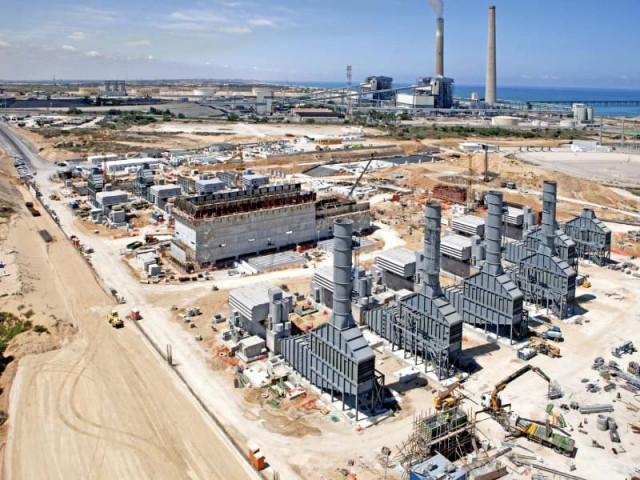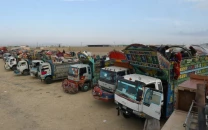Power shortage: Aeroderivative plants proposed to resolve problem
Ministry says these plants can be set up in a short span of time.

General Electric had installed such power plants with a capacity of 5,500 megawatts in Egypt in a short span of seven months. PHOTO: AFP
The Ministry of Petroleum and Natural Resources has proposed that the country should set up aeroderivative power plants to address the electricity shortage because of unavailability of gas and lack of means for the transportation of liquefied natural gas (LNG).
According to officials familiar with the development, Petroleum Minister Shahid Khaqan Abbasi floated the proposal in a high-level meeting of the Cabinet Committee on Energy on June 18, chaired by Prime Minister Nawaz Sharif.
Earlier in the meeting, a water and power ministry official pointed out that 700 megawatts of electricity could be generated through the Guddu power plant after refurbishing and doing maintenance work but it needed gas supply to run at optimum capacity.
Read: Falling to pieces?: Water shortage persists with erratic power supply
He said the Guddu plant would prove to be a strong back-up facility if the Neelum Jhelum hydropower project did not come on stream according to the schedule.
Abbasi, however, responded that LNG was the only solution to the gas shortage but pipelines for its transportation were not available as natural gas was being supplied through the dedicated pipelines.
Because of the scarcity of natural gas and difficulties in transporting the imported LNG, he suggested that an alternative was the aeroderivative power plants, which could be installed in a short time.
Citing an example, Abbasi said General Electric had installed such power plants with a capacity of 5,500 megawatts in Egypt in a short span of just seven months.
However, the Ministry of Water and Power did not give its backing to the idea, pointing out that financing was the main hurdle in the way of installing the aeroderivative plants. It would be appropriate to give priority to existing facilities instead of investing in unsustainable initiatives, it said.
The meeting was told that the original completion deadline for the Neelum Jhelum hydropower project was October 2015, but it had now been revised to November 2016.
Read: Winning the battle against heat and electricity shortage
The cost of the project has also gone up to $4.21 billion against the initial estimate of $1.8 billion. Financial close has not yet been achieved.
A revised PC-1 of the project has been submitted to the Planning Commission. Its financing requirements were estimated at Rs100 billion in local currency and $576 million in foreign currency.
The Finance Division has already approved a term sheet for Rs20 billion whereas the Pakistan Water and Power Development Authority (Wapda) has approached the National Bank of Pakistan for arranging funds in local currency.
Published in The Express Tribune, July 12th, 2015.
Like Business on Facebook, follow @TribuneBiz on Twitter to stay informed and join in the conversation.



















COMMENTS
Comments are moderated and generally will be posted if they are on-topic and not abusive.
For more information, please see our Comments FAQ